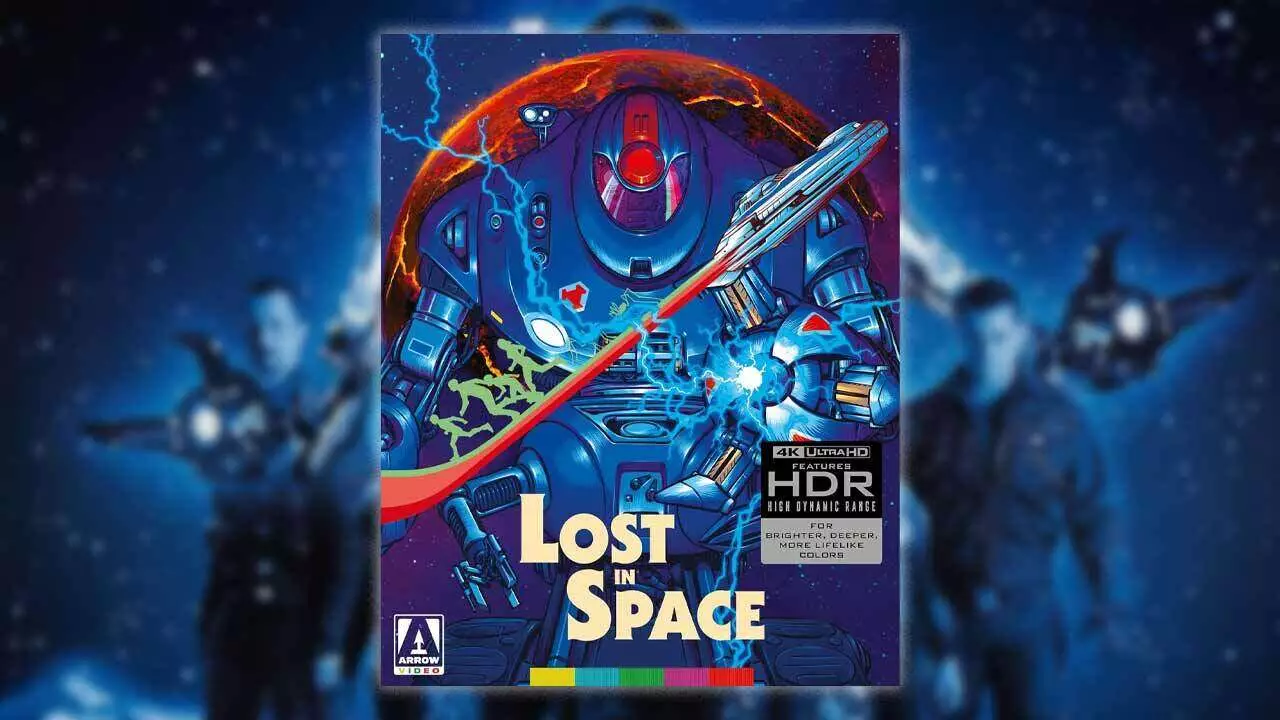In an era where remasters often feel like mere facelifts, Arrow Video’s upcoming 4K restoration of “Lost in Space” stands out as a bold embrace of cinematic restoration as an art form. This film, directed by Stephen Hopkins and starring Gary Oldman and William Hurt, has long held a paradoxical status among sci-fi aficionados. While it faced lukewarm reviews upon its release in 1998, it’s become an underappreciated gem—one that deserves its overdue shine on modern home theaters. The newfound visual clarity, supported by native 4K resolution and High Dynamic Range formats like Dolby Vision and HDR10, reveals a rich tapestry of visuals that were once hidden behind the limits of older formats. For those who appreciate the craftsmanship of cinema in its purest form, this edition isn’t just a movie; it’s an opportunity to rediscover a film that boldly combines ambitious storytelling with groundbreaking visual effects of its time.
Why This Edition Is a Collector’s Dream
Arrow Video’s Limited Edition isn’t simply about improving image quality; it’s a comprehensive archival experience that elevates “Lost in Space” into a collector’s paradise. The package boasts restored imagery approved by director Stephen Hopkins himself, ensuring that what you see on screen aligns with the filmmaker’s original vision. The reversible sleeve, featuring both the iconic theatrical poster and a breathtaking exclusive illustration, underscores an appreciation for artistic presentation. The included illustrated booklet—with in-depth essays, original production notes, and commentary from industry experts—adds layers of context that can deepen any viewer’s appreciation. Such attention to detail isn’t typical in mainstream releases, positioning this edition as a reflection of true cinephile craftsmanship.
Restoration Quality Meets Artistic Vision
The true marvel of this release lies in its technical mastery. By utilizing the original camera negative, the restoration team has reintroduced the film’s textures with unprecedented accuracy. The enhanced resolution reveals nuances in the set designs, special effects, and costume work that are often overlooked or muddied in prior editions. The support for Dolby Vision and HDR10 introduces dynamic contrast and vibrant colors, transforming what was once a visually ambitious but flawed film into a work of visual clarity and vibrancy. This is not an over-hyped conversion but a meticulous effort that turns the spotlight on Hopkins’ talent, the design team’s dedication, and the film’s inventive spirit. For those hungry for aesthetic authenticity, this release delivers on every frontier.
Expanding the Narrative Through Rich Extras
A restoration alone isn’t enough to re-establish “Lost in Space” as a revered classic, but Arrow’s comprehensive bonus features do just that. The inclusion of new interviews with Hopkins, Goldsman, and other key creative voices provides fresh insights into the film’s development and conceptual ambitions. Archival documentaries, bloopers, deleted scenes, and behind-the-scenes featurettes further enrich the viewing experience. Particularly compelling are the interviews exploring the film’s innovative visual effects techniques, which at the time were cutting-edge. These extras serve not merely as supplemental material but as a vital bridge connecting fans to the film’s creative heartbeat, cultivating a deeper understanding of why this film, despite initial reception, has grown in esteem over time.
Revolutionizing How We Experience Films
What makes this release truly significant is its potential to reshape perceptions around films that were not initially well-received. “Lost in Space” exemplifies how a movie’s true worth can be unveiled through meticulous restoration and passionate curation. The film’s ambitious narrative, blending familial dynamics with expansive sci-fi adventure, deserves a second chance in the digital age. It forces viewers to reexamine preconceived notions of quality based solely on initial reviews. Treatment of the source material, combined with high-end technical enhancements, transforms a flawed 90s blockbuster into a definitive edition that respects its origins while elevating its visual storytelling.
A Testament to the Power of Nostalgia and Innovation
Today’s cinephiles are often caught between nostalgia for past classics and an appetite for innovative home entertainment formats. Arrow Video’s meticulous work on “Lost in Space” bridges this divide—preserving the appeal of a beloved cult film while pushing the boundaries of what a home media release can achieve. For fans of the original series and newcomers alike, the 4K edition is more than just a viewing experience; it’s an invitation to revisit a film that dared to dream big—and, with this restoration, finally shines in the way it was always meant to. That, perhaps, is the most compelling power of this release: it reignites the curiosity and admiration for a film that was ahead of its time, badly judged upon initial release, but now poised for a renaissance in cinematic appreciation.

